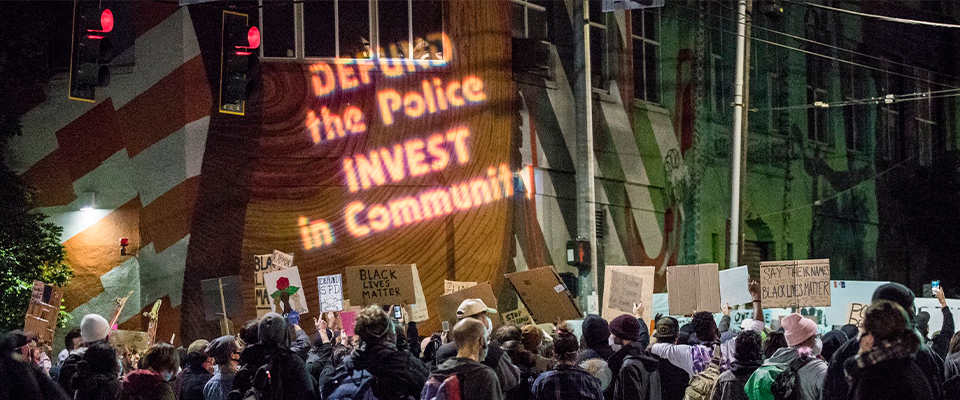The title of UC Berkeley criminologist Franklin Zimring’s book, When Police Kill, released by Harvard University Press this week, is as stark as its mission is simple: to conduct a comprehensive study of police use of lethal force in the United States.
It’s a worthy task, given how little was known about police violence when it became a national crisis with the killing of Michael Brown in 2014. Indeed, government monitoring was so lacking that it took journalists at the Washington Post and the Guardian to build national databases.
The Post counted 991 people shot and killed by police in 2015 and nearly 800 as of late-October in 2016. The Guardian, meanwhile, counts killings by American police by all means. Its numbers are 1,146 for 2015 and 883 for 2016.
In a nutshell, when police officers are attacked or feel threatened, particularly when they are alone and fear a gun is involved, they are more likely to fatally shoot a civilian.
But Zimring, the William G. Simon professor of law and faculty director of Criminal Justice Studies, also aims with his book to reduce violence—by police against civilians and by civilians against police—by studying both phenomena simultaneously.
“The whole idea of putting police assaults together with citizen assaults only happens in this study and I can’t understand that,” he says.

In a nutshell, when police officers are attacked or feel threatened, particularly when they are alone and fear a gun is involved, they are more likely to fatally shoot a civilian.
“The linkage is between the strong vulnerability that American police officers have to deadly attack and the high rate at which American police officers kill civilians,” says Zimring, who has written about the scandalous lack of data on killings by police. “Those two have to be studied together. The significant challenge is to sharply reduce the rate of killings of civilians by police without increasing the vulnerability of police to being killed by civilians assaults.”
“By doing careful comparisons of where the killings take place and where the police are really at risk, we can probably cut [fatal shootings by police] down to 500 a year,” says Zimring. “Then things get more complicated.”
As Zimring writes in When Police Kill:
“This is a serious problem we can fix. Clear administrative restrictions on when police shoot can eliminate 50 to 80 percent of killings by police without causing substantial risk to the lives of police officers or major changes in how police do their jobs. A thousand killings a year are not the unavoidable result of community conditions or of the nature of policing in the United States.”
Zimring offers three key recommendations to reduce the number of deaths at the hands of law enforcement:
- Police departments must adopt the belief that the preservation of civilian lives is an important principle of police policy.
A brief statement of policy priorities should usefully precede specific rules and restrictions, stating that the department’s two priorities in deadly force policy are (1) to protect officers on duty and innocent civilians from the risk of life- threatening injury, and (2) to keep the death and wounding of civilians in encounters with police to an absolute minimum. Deadly force should not be used to win in conflicts with law violators, to make arrests, or to prevent escape. And each shot fired in a deadly force situation must be separately justified to prevent life-threatening injury to officers and the citizens they serve.
- Police departments must create protocols governing lethal force that can reduce civilian casualties without significant risk to police safety. For example, rules that would require:
Waiting to confirm the presence of a weapon, which does not appear to be a serious danger when police are not alone. In a world full of cell phones, only a very small proportion of the objects young men keep in their pockets are deadly weapons.
More than two hundred times a year in the United States, the person killed by police gunfire has and may be threatening to use a knife, club, or other dangerous weapons that has little or no potential to kill an on duty police officer. The data suggests that the use of deadly force to respond to knives and baseball bats should be prohibited with very few exceptions.
- State and federal legislation and regulations can be used to create incentives and disincentives to “push police departments in the correct direction.” For example, at the federal level:
Create a new and comprehensive reporting program for deaths and serious injuries from attacks for police officers and civilians; and create new federal criminal laws prohibiting unnecessary killings, excessive use of lethal force, and knowing obstruction of a departmental investigation of a police shooting.
And at the local level:
Mayors and city legislatures can perform two very important functions relevant to the control of lethal violence by street police. The first vital function is in choosing a police chief, exercising the power to hire (and on occasion to fire) police leadership. Obviously, making control of police use of lethal force a priority in the selection of a chief is important. Second, if police leaders do make serious efforts to reduce the civilian death rate, then mayors and city councils must support such efforts.
Zimring says he is confident but cautious about being able to reduce killings involving police.
“I know we can save 500 lives a year. We might be able to save 800 lives,” he says. “But we’ve got to do our homework first and we have to do it carefully and well.”
Tom Kertscher is a PolitiFact Wisconsin reporter for the Milwaukee Journal Sentinel and the author of books on two Wisconsin sports figures: Al McGuire and Brett Favre. Follow him on Twitter: @KertscherNews and @KertscherSports.



















